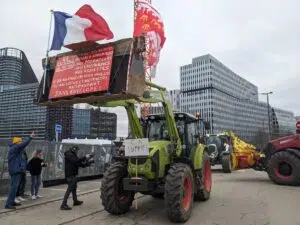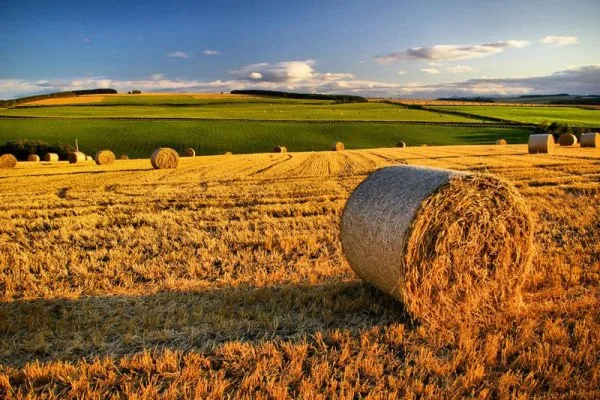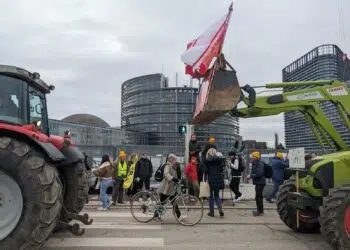Brussels – While the debate on the situation of European farmers and the tractor protests that are sweeping half of the Union continues in Strasbourg, in Brussels, the chairman of the Agriculture, Rural Development, Environment (NAT) section of the European Economic and Social Committee (EESC), Peter Schmidt, explains the institution’s position on the issue that has become a priority over the past two weeks: “We have been talking since 2016 about the need to change model towards climate neutrality. There has never been a clash on this, but there is no justice in value distribution along the supply chain, where the price of the final product does not consider farmers.”

Speaking to a group of journalists in Brussels today (Feb. 7), Schmidt called for “EU measures to secure the future of the sector,” both in terms of fair distribution of resources along the food chain and in trade agreements (such as with Mercosur) that “do not meet the same standards demanded of our farmers.” The idea is not less Europe: on the contrary, “more nationalism would lead to more fragmentation of the Internal Market,” with negative repercussions. Faced with a scenario in which the income of farmers is about 40 percent lower than the average non-farm income and the risk of “unrealistic timelines for a goal we share” on the environmental front, the EESC calls to bring farmers and agri-food chain actors to the center of policy discussions on how to move toward autonomous and sustainable food production: “The farming community needs solutions to accompany the transition and to ensure reciprocity of standards on the global market.” He doesn’t spare criticism of the EU Commission: “It launched a strategic dialogue with farmers without involving us when in our institution there are many representatives of the sector,” Schmidt attacks.
Not surprisingly, the Belgian rotating presidency of the EU Council commissioned the CESE to draft an opinion on the strategies for the Common Agricultural Policy post-2027 with a focus on “autonomous and sustainable food production.” With approval at its January plenary session, the EESC called for the post-2027 CAP to establish a “stable, long-term policy framework geared toward sustainable food production and open strategic autonomy for the European Union” while protecting the diversity of types of EU agriculture and meeting social and ecological needs. The tractor protests should be “a wake-up call” that turns the spotlight on the need to “adequately” support farmers during the transition phase: although that the share of the EU budget allocated to the CAP is now less than 25 percent, “funding must be commensurate with the ambition to support a sustainable transition” and “basic area-based income support must be gradually replaced by financial incentives to farmers for environmental and social services,” with a “reasonable transition period that can go beyond the scope of a single multiannual financial framework.” 
Looking at agricultural policy for the next decade, the need to “prepare the CAP for the Union’s enlargement ” is inevitable, Schmidt points out, referring to the opinion and, in particular, to the role Ukraine will play. In this sense, the “European agricultural model” will not have to be lost, putting an end to a whole series of problems that became evident in recent decades: the eclining number of farms in the EU, lack of generational turnover, declining average income, unfavorable investment conditions, difficulties for women’s empowerment, and worsening working conditions even in the long term. Instead, the new agricultural policy will have to push the “sustainable exploitation of abandoned or marginal land and extensive livestock farming,” the “preservation of sustainable agricultural production,” and the “promotion of consumer demand for healthier and more sustainable diets,” while reducing food waste, and regulating food markets “to address the financialization of the sector.”
English version by the Translation Service of Withub



![Un campo arato [foto: Wikimedia Commons]](https://www.eunews.it/wp-content/uploads/2024/02/campo-arato-350x250.jpg.webp)




